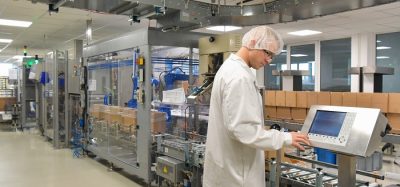Exploring the gene therapy biomanufacturing landscape
Posted: 5 October 2023 | European Pharmaceutical Review | No comments yet
In this exclusive Q&A with European Pharmaceutical Review, Sheila Ann Mikhail, co-founder of AskBio and keynote speaker at CPHI Barcelona delves into the current landscape and future potential of the gene therapy sector. She explores strategies for making gene therapies more affordable and accessible, innovations in drug delivery, as well as the role of artificial intelligence (AI) in advancing the field.


Ahead of her presentation on the future of biomanufacturing at CPHI Barcelona, Sheila Ann Mikhail, the co-founder and former CEO of AskBio, engages in a conversation about gene therapy, artificial intelligence, and the importance of being a well-informed innovator when selecting a manufacturing partner.
What are the key topics you plan to cover during your session at CPHI Barcelona?
The field of gene therapy has witnessed remarkable advancements; it has evolved from being an exceedingly complex solution to a viable option for addressing rare diseases”
Sheila Ann Mikhail (SM): “In my presentation, I aim to provide an in-depth exploration of the current state of the gene therapy research sector, which is currently experiencing a pivotal moment. Specifically, I’ll address strategies to enhance the affordability and accessibility of these therapies to broader populations. The field of gene therapy has witnessed remarkable advancements; it has evolved from being an exceedingly complex solution to a viable option for addressing rare diseases. Our next challenge lies in the scalable application of gene therapy for pathway diseases like Parkinson’s. Achieving this goal hinges on reducing the cost of goods, thus making the technology more economically viable and accessible to patients. I firmly believe that manufacturing plays a pivotal role in this endeavour, and I will delve into topics such as production system optimisation and the standardisation of chemistry, manufacturing, and control (CMC) processes.”
Sheila will be delivering the keynote address for the Next-Gen Biomanufacturing track on Day 1 of CPHI. Her presentation titled Setting the Scene for the Biomanufacturing Landscape starts at 11:00 on 24 October in Room 4.3 at Conference Centre 4.
What innovations are you particularly enthusiastic about in the coming two to three years?
SM: “Within the realm of viral-based gene therapy, I’m keenly interested in the concept of repeat dosing, which is imperative to mitigate the effects of cell turnover. I see this as an attainable goal, given the diverse approaches being explored by various researchers. Additionally, I’m excited about endeavours to reduce the cost of goods through improved manufacturing methods. One notable approach I championed was altering the formulation, as exemplified by our work with the Columbus Children’s Foundation. We introduced gene therapy drugs into a technology known as thin film technology, enabling them to be stored at room temperature. This not only extends their shelf life but is also pivotal for treating a larger patient population, thereby reducing manufacturing expenses by eliminating the need for constant production.
Another captivating area of innovation is lipid nanoparticles (LNPs). While currently primarily used for liver-targeted delivery, numerous companies are focusing on leveraging LNP technology for the delivery to other tissues. LNPs offer advantages such as reduced toxicity compared to adenovirus-based delivery methods, simplified manufacturing processes, and avoidance of immune responses and preexisting neutralising antibody issues.
Moreover, the broader field of gene editing is showing considerable promise. Base and prime editing techniques are beginning to demonstrate their capabilities, heralding a shift from ex vivo to in vivo approaches. We are witnessing the emergence of multiple tools for treating genetic diseases, expanding our gene editing toolbox and allowing for more precise disease-specific treatments, departing from the traditional ‘one size fits all’ approach. I am genuinely excited to witness the future developments in these areas.”
How do you foresee the integration of artificial intelligence (AI) in the field?
Looking ahead, I believe AI’s role will expand to expedite clinical trials, specifically in patient selection and simulation”
SM: “AI is already in active use, particularly in the design of capsids. We are currently exploring methods to modify viral vector receptors for precise tissue targeting, and AI greatly enhances our ability to efficiently screen numerous options. This is its present application. Looking ahead, I believe AI’s role will expand to expedite clinical trials, specifically in patient selection and simulation. The future holds the promise of more robust predictive capabilities, particularly within specific patient demographics. We have been harnessing AI for approximately five years, and as our databases become more sophisticated, AI evolves in tandem. It stands as an indispensable component in the future landscape of gene therapy, and I eagerly anticipate its continued integration.”
What recent challenges have you observed in the industry?
SM: “There has been a surge of enthusiasm in the industry during favourable market conditions, followed by cyclic reductions in funding afterward – a scenario akin to what we are experiencing now. The takeaway here is that when excitement runs high, the industry, in general, should exercise more caution and scepticism, especially when embarking on clinical trials. Overhyping without thorough investigation and robust evidence undermines credibility. Profit-driven motives have at times led to excessive aggressiveness in both target investments and timeline expectations, resulting in an unfortunate increase in product failures. As the saying goes, ‘Less haste, more speed’ should be our guiding principle.”
How crucial is establishing a robust supply chain for product development and commercialisation?
Additionally, having a strong foundation of CMC knowledge within your organisation or with a consultant, even when working with highly experienced CDMOs, increases the likelihood of overcoming challenges effectively
SM: “Establishing a robust supply chain is absolutely indispensable. Assuming control of your manufacturing is imperative. During my tenure at Bamboo, I was steadfast in our endeavour to take charge of as much manufacturing as possible, even though it posed challenges in securing funding. We pursued a strategy of backward integration and sought to control every aspect. While this might not always be the most cost-effective approach, it is vital because the manufacturing process itself constitutes the product. It is analogous to cultivating crops – every element can impact the final product. Failure to meticulously manage the supply chain can result in product contamination, ultimately affecting product quality. Although contract development and manufacturing organisations (CDMOS) remain highly valuable, it is essential to be an informed buyer of CDMO services and an engaged partner. This entails frequent progress assessments, ensuring the proper implementation of studies, and active involvement. My key message is this: forging the right partnership with your CDMOs is paramount to expedite progress. It involves on-site collaboration and joint troubleshooting. Additionally, having a strong foundation of CMC knowledge within your organisation or with a consultant, even when working with highly experienced CDMOs, increases the likelihood of overcoming challenges effectively as a cohesive unit.”
What recommendations do you have for expediting the product pipeline to market?
SM: “Standardisation across the industry is pivotal for accelerating processes, and this is a goal we all should pursue. The aim is to develop processes that can be executed once and then seamlessly adapted elsewhere. Take, for example, cell lines. During my time at Bamboo, we often used our clients’ cell lines, which presented challenges as we had to continuously fine-tune these unoptimised cell lines, causing delays. A more effective approach we later adopted was to develop our own standardised cell line, which we understood inside out. Instead of wrestling with the complexities of fixing a client’s problematic cell line, we used our own. While unconventional, this approach proved highly efficient and cost-effective. It accelerated our programmes and those of our clients, as we could license our cell line for their future manufacturing needs. It was faster, cheaper, and overall more effective. Standardisation is the key to expediting product delivery to the market.”
About the interviewee


Related topics
Artificial Intelligence, Big Pharma, Biopharmaceuticals, Bioproduction, Clinical Development, Contract Manufacturing, Drug Development, Drug Manufacturing, Gene therapy, Industry Insight, Manufacturing, Research & Development (R&D), Supply Chain, Technology, Therapeutics









